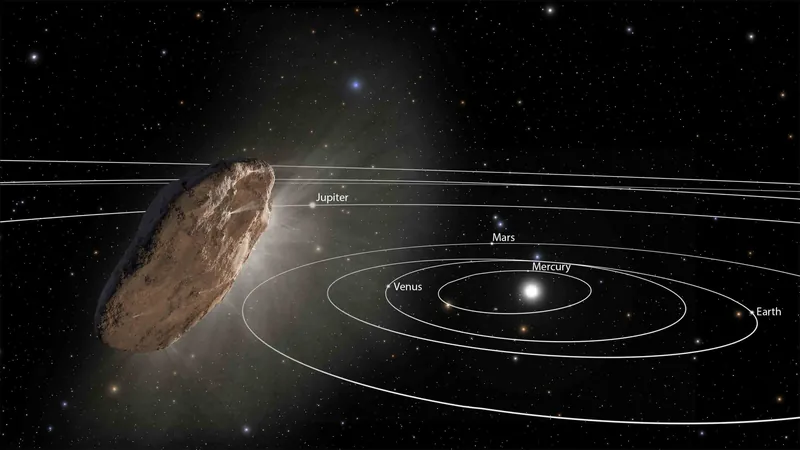
Unlocking the Mysteries of Interstellar Objects: How We Can Study Cosmic Wanderers
2025-07-17
Author: Charlotte
A Glimpse from the Stars
Back in late 2017, an extraordinary object hurtled through our solar system, captivating astronomers worldwide. Dubbed ‘Oumuamua—Hawaiian for ‘scout’—this enigmatic visitor measured about a quarter of a mile (400 meters) in length and had a distinctly elongated shape, roughly ten times longer than it was wide. It was the first confirmed interstellar object (ISO) to make its mark on our cosmic neighborhood.
The Origins of Cosmic Nomads
Interstellar objects like ‘Oumuamua are essentially wandering debris from their home star systems, expelled by catastrophic events such as massive collisions. Researchers speculate that it might have roamed the Milky Way for hundreds of millions of years before its brief encounter with our solar system. Just two years later, another ISO, the Borisov Comet, was spotted by an amateur astronomer in Crimea, followed by a third ISO, 3I/ATLAS, detected by the Asteroid Terrestrial-impact Last Alert System (ATLAS). These visits have opened a window into the material that exists far beyond our stellar neighborhood.
The Quest for Closer Encounters
But why stop at observing these fleeting guests from afar? Imagine the wealth of information scientists could gain by studying ISOs up close, offering insights into distant star systems that we can’t reach with traditional space missions. With over 10 septillion ISOs estimated to exist just in our galaxy, the question arises: why have we spotted only a few?
The Challenge of Detection
The reality is that large ISOs, like ‘Oumuamua, are rare visitors. They zip past our solar system at incredible speeds, making detection a challenge. Ground and space-based telescopes struggle to react quickly enough to catch them as they fly by. But what if innovative space missions could help guide spacecraft to intercept these cosmic wanderers before they’re gone?
Future Missions on the Horizon
Enter NASA’s Bridge mission and the European Space Agency’s Comet Interceptor, both designed to catch these celestial nomads. While Bridge aims to launch once an incoming ISO is detected, a critical 30-day launch window makes timely intervention difficult. Comet Interceptor, set to launch in 2029, will position itself one million miles from Earth to await a suitable ISO or long-period comet, ready for rapid deployment when the moment strikes.
The Speed Conundrum
Despite these advancements, the primary limitation remains speed. Current missions need to evolve rapidly, using cutting-edge AI and deep learning techniques to identify and respond to these guests in real-time. Innovations like small swarm spacecraft could inspect targets from multiple angles and adapt during flight.
Preparing for an ISO Boom
A major astronomical survey at the Vera C Rubin Observatory is set to kick off soon, anticipating the discovery of dozens of ISOs each year. To keep pace, any spacecraft would need a reliable energy source for its journey—solar sails offer a promising solution, using sunlight for propulsion without the burden of heavy fuel tanks. Future advancements might even harness lasers to propel spacecraft to unprecedented speeds.
Innovative Materials for Space Exploration
Approaching an ISO presents challenges as well, including withstanding extreme temperatures and potential dust erosion. Researchers are exploring lightweight, durable materials including advanced carbon fibers that could even be 3D printed. Combining traditional materials like cork and ceramics may also lead to effective shielding without adding excessive weight.
Collaboration is Key
A successful strategy to intercept ISOs will require a concerted effort between ground-based telescopes and space missions. Advanced technology could enable spacecraft to predict incoming objects’ trajectories autonomously. However, potential funding cuts to space science in the U.S., particularly concerning observatories like the James Webb Space Telescope, threaten this progress.
A New Era of Discovery Awaits
If we seize the moment and invest in emerging technologies, interstellar exploration could yield unprecedented discoveries. Otherwise, we may find ourselves merely capturing distant images of cosmic wanderers as they slip away into the vastness of space.
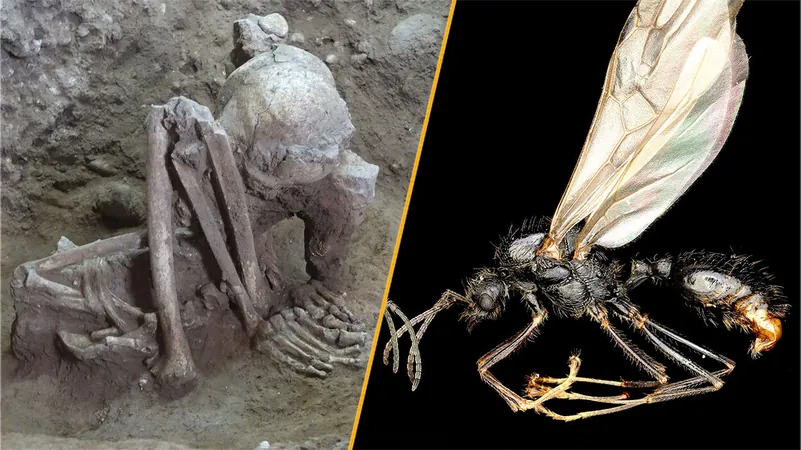

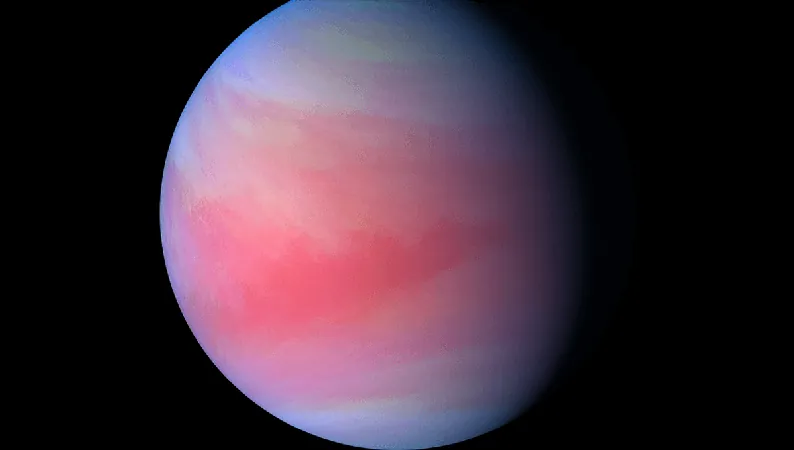
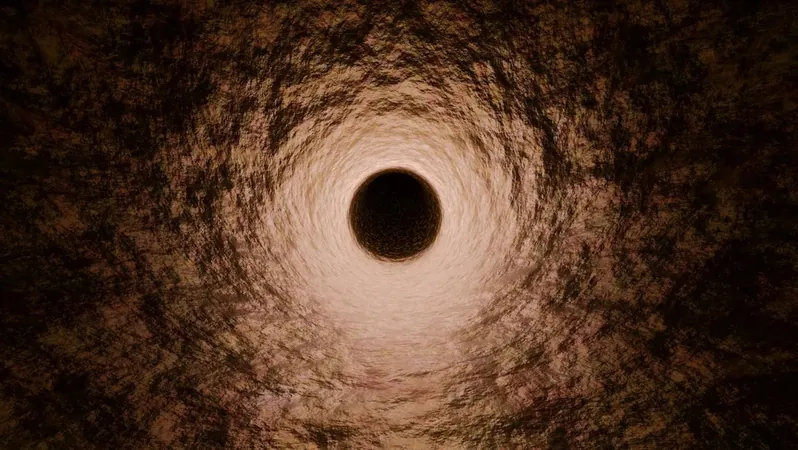




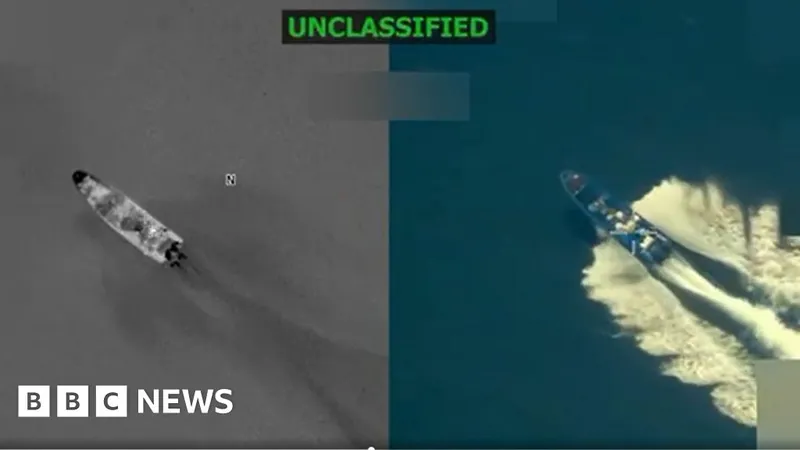
 Brasil (PT)
Brasil (PT)
 Canada (EN)
Canada (EN)
 Chile (ES)
Chile (ES)
 Česko (CS)
Česko (CS)
 대한민국 (KO)
대한민국 (KO)
 España (ES)
España (ES)
 France (FR)
France (FR)
 Hong Kong (EN)
Hong Kong (EN)
 Italia (IT)
Italia (IT)
 日本 (JA)
日本 (JA)
 Magyarország (HU)
Magyarország (HU)
 Norge (NO)
Norge (NO)
 Polska (PL)
Polska (PL)
 Schweiz (DE)
Schweiz (DE)
 Singapore (EN)
Singapore (EN)
 Sverige (SV)
Sverige (SV)
 Suomi (FI)
Suomi (FI)
 Türkiye (TR)
Türkiye (TR)
 الإمارات العربية المتحدة (AR)
الإمارات العربية المتحدة (AR)